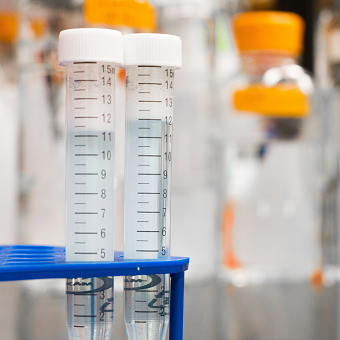Antibacteria Additives Plastic

Strains that are produced on different occasions
|
Place |
Type |
Colony count (CFU) |
Bacteria type |
|
Hotel |
Toilet part 1 |
17 |
E. coli, S. albus, B. subtilis |
|
Toilet part 2 |
35 |
E. coli, S. auresus, B. subtilis, Tetrad Coccus |
|
|
Toilet part 3 |
42 |
E. coli, S. auresus, S. albus |
|
|
Hospital, Hostel |
Door handle 1 |
>200 |
S. albus, B. subtilis |
|
Door handle 2 |
35 |
S. auresus, S. albus, B. subtilis |
|
|
Door handle 3 |
96 |
E. coli, S. auresus |
|
|
Door handle 4 |
73 |
S. albus, Tetrad Coccus, N. Catarrhal |
|
|
Public phone |
Microphone 1 |
57 |
S. albus, Tetrad Coccus, B. subtilis |
|
Microphone 2 |
6 |
S. auresus, S. albus |
|
|
Microphone 3 |
34 |
S. albus, B. subtilis, Tetrad Coccus |
|
|
Microphone 4 |
41 |
S. auresus, S. albus, B. subtilis |
|
|
Nursery school, kinder garden |
Plastic toys 1 |
44 |
E. coli, B. subtilis, N. Catarrhal |
|
Plastic toys 2 |
10 |
S. auresus, Tetrad Coccus, B. subtilis |
|
|
Household |
Plastic chopping board |
30 |
Salmonella, P. aeruginosa, E. coli, B. typhoid |
Inorganic Antibacterial Agent :
Metal ions (Ag+, Zn+, Cu+, etc.) can adsorb proteins in the cell membrane of microorganisms (yeast, bacteria) and bind to the SH radicals therein, so that the energy metabolism of the microorganisms cannot be carried out, resulting in the death of bacteria.
The ability of various cations to adsorb bacterial cell membranes is not the same. Silver ions are the most prominent. Although their prices are relatively expensive, they are less expensive in the products. In durable plastic products, the cost is a small share of total cost, which has little effect on product prices. Therefore, the silver ion/carrier is the most abundant type of antibacterial agent in durable plastics.
Copper ion/carriers are currently used less, and zinc ions/carriers are mostly used in disposable plastic products, such as beverage bottles. In order to reduce the cost and maintain the sterilizing ability, a silver-copper/carrier antibacterial agent can be synthesized by a method of coprecipitation, replacing some silver ions with silver ions.
The principle of titanium oxide sterilization. The oxide of titanium means that TiO2 and a salt containing TiO2 can generate negative oxygen ions in the vicinity of the oxygen molecules under illumination. In the presence of hydrogen ions, water can also be converted into hydroxyl radicals.
![]()
![]()
Both molecular fragments are active, collectively referred to as reactive oxygen species. Active oxygen can oxidize dehydrogenase in microorganisms, destroy the SH group, change the original physiological activity of the protein, inhibit the activity of the enzyme, and make microorganisms such as bacteria unable to carry out energy metabolism and die.
Among such antibacterial agents, TiO2 is mostly applied to the surface of the product, such as an antibacterial tile, which is used on the surface of the bathtub. Since its bactericidal action needs to be carried out under illumination, it is used less separately.
Potassium titanate fiber (K2O.nTiO2) is used as a carrier to adsorb silver ions. Since the main bactericidal action comes from silver ions, TiO2 plays a bactericidal role under illumination, so the effect is superior to other inorganic bactericides.
Organic Antibacterial Agent :
Synthetic :
The synthetic organic antibacterial agent acts like a biological aging inhibitor (mold inhibitor) to kill bacterial spores by chemical reaction. Since the antibacterial agent is in contact with the human body, only those synthetic organic compounds which are non-toxic or less toxic can be used as antibacterial agents; most of the synthetic organic antibacterial agents can be used as antifungal agents, but the effect is poor.
Synthetic organic antibacterial agents on foreign markets are mostly organic nitrogen-containing ionic compounds, and their chemical structures are similar to antistatic agents. In addition, there are a small amount of other types of compounds such as an organic iodide (3-iodo-2-propylcarbamate), a metal salt of an amino acid, and the like.
Natural :
There are many plants with antibacterial agents, such as hawthorn, Mengzong bamboo, alfalfa, tea, rosemary leaves, coffee residue, mint, lemon leaves, etc., their extracts and lysine can be used as antibacterial agents. The advantage is that it is basically non-toxic, and the disadvantage is that the service life is short.
It is suitable for use in products that are used for a short period of time such as food bags.
Main categories of antibacterial agents on the market
|
Type |
Pros |
Cons |
||
|
Inorganic |
Metal ion / Carrier |
Ag+ / Carrier |
1. Semi-permanent effect 2. Better Safety 3. Great Heat-resistance |
1. Higher price 2. Coloring during process |
|
Zn+ / Carrier |
1. Lower price 2. Can be used with beverage-contact products |
1. Less Safety, Transparence compared to Ag+ type 2. Skin irritation |
||
|
Cu2+ / Carrier |
1. Semi-permanent effect 2. Able to mix in metal 3. Lower price |
1. Lower performance compared to Ag+ type 2. Less safety compared to Ag+ & Zn+ type |
||
|
Titanium Dioxide |
1. Semi-permanent effect 2. Better Safety |
Poor processability, reproducibility |
||
|
Ag+ / Carrier with TiO2 |
The titanium-containing oxide in the carrier potassium titanate fiber can simultaneously sterilize the metal ion and the titanium dioxide |
Higher price |
||
|
Organic |
Synthetic |
1. Immediate effect 2. Lower price |
1. Short validity 2. Less safety and heat-resistance |
|
|
Natural |
1. Better Safety |
1. Short validity 2. Less heat-resistance |
||